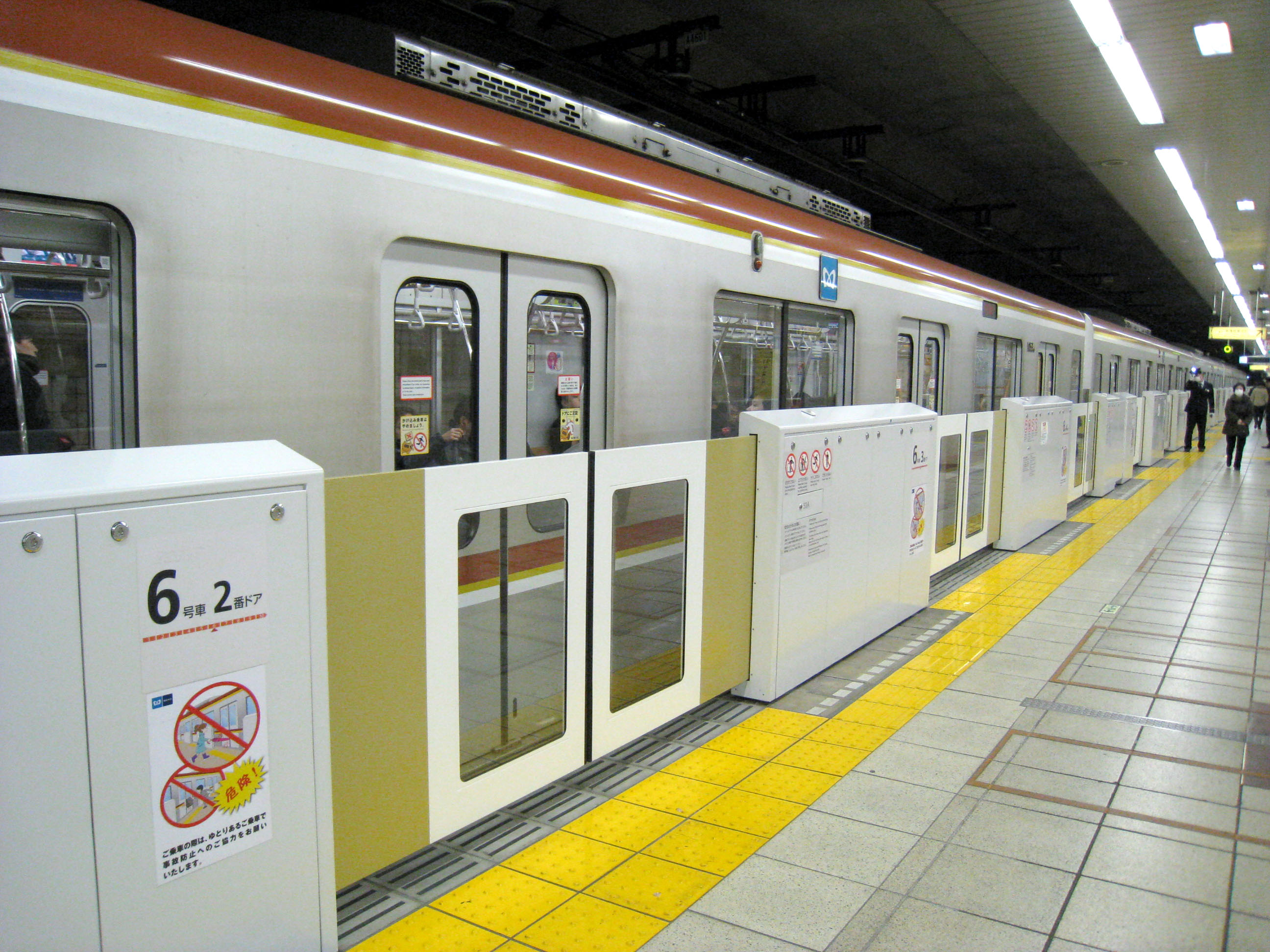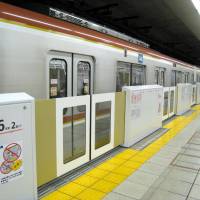Dear Alice,
As a longtime resident of Japan, I have watched with interest the recent installation of barriers on the platforms of many of our subway and train lines. These barriers run the full length of the platform and have sliding gates at just the places where there are train doors when a train is in the station. I presume these barriers are there to prevent passengers from falling off the platforms, but this smells to me like paternalistic overprotection. Do accidents really happen often enough to justify the expense? What the heck is the logic here?
Connor F., Tokyo
Dear Connor,
I'm not sure whether to thank you or spank you for bringing this to my attention. I travel every day through stations with unprotected platforms but hadn't thought much about risk.
Sure, an open-style platform works fine when all systems are normal. But what if a crowd swarmed the platform? Or if a dizzy spell befell me? Or if I got a big bump from behind? All of a sudden my daily commute feels like an accident waiting to happen.
Accidents do happen. In the six months from April to September last year there were 119 platform accidents in Japan. Passengers were seriously injured or killed when they fell from station platforms, or because they were too close to a platform's edge and were struck by an arriving train.
Alcohol was a factor in 60 percent of these cases, and there is an increasing problem of accidents caused by people looking at their mobile phones instead of where they're going. But it's not all drunks and dummies: Platforms are particularly dangerous places for the visually impaired. Last July, a 50-year-old blind man was killed when he fell off the platform at a station in Machida, Tokyo, and was hit by a train.
To prevent such accidents, train operators around the country are installing gated barriers at the edge of platforms. These barriers are called hōmu doa in Japanese, a term coined locally from the words for "platform" and "door." (In other countries they're usually referred to as "platform screen doors" or "automatic platform gates.") Hōmu doa are not required by law, but the government says they are nozomashii (desirable) and recently recommended them for any station used by more than 100,000 passengers per day.
To find out more, I paid a visit to Tokyo Metro, one of the largest subway operators in Asia, with a network of nine lines and nearly 2,000 km of track. The company moves an average of 6.3 million people each day — almost three-fourths of subway riders in Tokyo. Ikebukuro is the busiest station in their network, where they serve 476,000 passengers a day.
I sat down with Takamitsu Aiba, of the railway management department, who told me that Tokyo Metro was the first subway operator in Japan to adopt platform doors, for the new Namboku Line that opened in 1991.
"We observed a very significant reduction in accidents on the Namboku Line compared to lines without platform doors," Aiba explained. "The next step was to study whether we could retrofit platform doors into existing stations."
It is one thing to include platform doors when you're building an entirely new train line, but quite another to retrofit them onto the platform of a working station. Tokyo Metro started by installing platform doors at two stations on the Chiyoda Line (Ayase and Kita-Ayase), which were relatively easy to convert. Construction was done entirely at night after the trains stopped running and without disrupting service. After that, Tokyo Metro retrofitted all 28 stations of the Marunouchi Line with platform doors.
For the Namboku Line, Tokyo Metro used full-height doors that extend nearly to the ceiling. But for subsequent projects the company opted for half-height doors like the ones in the photo accompanying today's column.
"Each style has advantages and disadvantages," Aiba explained. "Full-height doors make it easier to air-condition a station and cut down on noise from the tracks. But half-height doors are lighter, easier to build into existing stations and provide a more open feel on the platform. For the Yurakucho Line, we're using transparent doors that enhance the open feeling and will also allow passengers to gauge the gap between the platform and train before they open."
Speaking of gaps, Tokyo Metro is also adding movable platform extensions at stations where the curvature of the platform creates a significant space between the platform and a subway car's door. These are called kadō steppu in Japanese and "gap fillers" in English. When a train stops in the station, an extension moves out automatically to reduce the gap between the platform and the train.
You asked whether the improvement in safety justifies the expense. It's hard to do cost-benefit analysis when human life is involved, but let's look at costs first. The budget to install platform doors in the 24 stations of the Yurakucho Line, a project now in progress, is ¥12 billion. That includes necessary modifications to the trains as well.
The expected benefit? Total elimination of platform accidents: When platform doors were installed on the Marunouchi Line, the number of accidents dropped from 10-20 per year to none. Zero. Not one platform accident.
"It's important to understand that the benefit of accident reduction extends far beyond the individuals who are kept safe from death or injury," Aiba stressed. "Anytime there is an accident in a station, all trains on that line have to be stopped. Depending on the time of day, and how long trains have to be halted, the disruption in service can affect thousands if not tens of thousands of passengers," he said.
Tokyo's transportation system is highly complex, with trains from different companies sharing tracks in order to offer "no-change" service from the city center to suburban areas. Tokyo Metro has agreements with other railway companies for sōgō chokutsū unten (reciprocal through-service) on seven of its nine lines.
"A disruption on one line has a ripple effect on other lines, which in turn has an effect on an even greater number of passengers," Aiba said. "Reducing accidents is of critical importance in providing smooth, reliable service."
All in all, it does look like an open-and-shut case for platform doors.



















With your current subscription plan you can comment on stories. However, before writing your first comment, please create a display name in the Profile section of your subscriber account page.